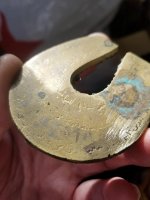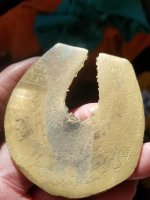I found this brass horseshoe at the beach. It has what I think is some foreign writing on it. Indian? Arabic? Can anyone read some of the writing? It's a pretty crude casting with slag and raggedy edges. Is it just something made to throw away as a religious offering?
Attachments
Last edited:









